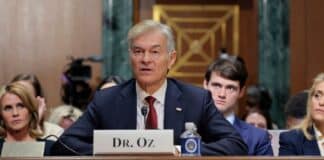In response to growing concerns over air traffic safety, the Federal Aviation Administration (FAA) has partnered with SpaceX to modernize the nation’s air traffic control system. The initiative follows a fatal midair collision on January 29 near Washington, D.C., which resulted in 67 deaths and heightened scrutiny of FAA operations. Transportation Secretary Sean Duffy invited SpaceX experts to visit the FAA’s Air Traffic Control System Command Center in Virginia to evaluate current protocols and recommend improvements.
SpaceX’s Role in Air Traffic System Overhaul
Elon Musk’s aerospace company, SpaceX, has built a reputation for revolutionizing spaceflight through automation, artificial intelligence, and advanced tracking systems. The FAA hopes to leverage SpaceX’s expertise in satellite communications, data processing, and automation to enhance the efficiency and safety of U.S. airspace management.
Transportation Secretary Duffy emphasized the need for cutting-edge solutions, stating, “We need the best minds in technology to help make our air traffic control system safer. SpaceX has proven its ability to handle complex aerospace logistics, and I believe they can help us modernize our outdated infrastructure.”
Musk responded positively, calling air travel safety a nonpartisan issue. He pledged SpaceX’s commitment to optimizing flight routing, collision avoidance, and system efficiency using the company’s existing aerospace technologies.
FAA Workforce Cuts and Industry Reaction
The FAA’s decision to bring in private-sector experts coincides with a broader restructuring effort. In a controversial move, the agency recently terminated hundreds of probationary employees as part of a federal workforce reduction. The Professional Aviation Safety Specialists (PASS) union has criticized the decision, warning that the staffing cuts could further strain an already overburdened system.
Union representatives argue that removing experienced personnel from air traffic control operations while bringing in outside consultants could create additional instability. However, the FAA maintains that the layoffs were necessary to increase efficiency and focus resources on critical technological advancements.
Ongoing Tensions Between SpaceX and the FAA
This collaboration marks a shift in the often-contentious relationship between SpaceX and the FAA. In previous years, Musk has publicly criticized the agency for delaying SpaceX launches and imposing regulatory roadblocks. The FAA, in turn, has fined SpaceX for alleged safety violations and unauthorized test flights. Despite past conflicts, both parties appear willing to set aside differences in pursuit of national air traffic safety improvements.
FAA officials have indicated that the SpaceX team will conduct an initial assessment over the next several weeks, with a full report and recommended solutions expected by mid-year. If successful, this partnership could serve as a model for further private-sector involvement in modernizing government infrastructure.
Looking Ahead: A High-Tech Future for Air Traffic Control
This initiative underscores the Trump administration’s broader push to incorporate private-sector innovation into federal operations. Beyond the FAA, similar efforts are underway in sectors such as energy, healthcare, and national security, where technology-driven solutions could enhance efficiency and cost-effectiveness.
As the FAA and SpaceX move forward with their collaboration, industry analysts will be watching closely to see whether this partnership leads to tangible improvements in air traffic safety. With increasing concerns over flight congestion and aviation incidents, the need for a modernized, technology-driven air traffic control system has never been greater.






